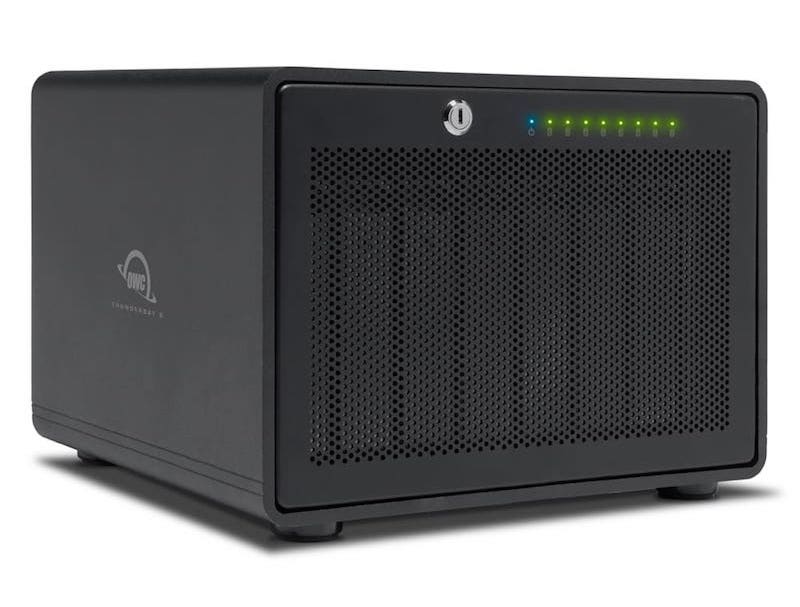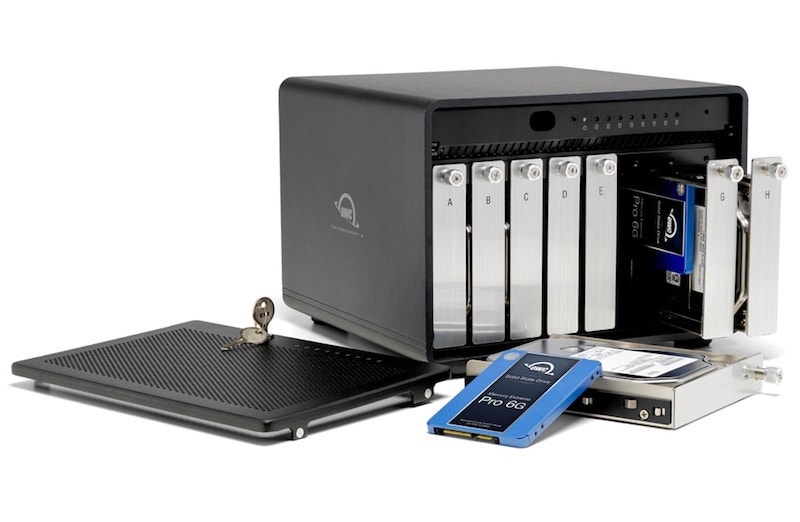
NEWS – How much data do you need to store? Chances are you can store it all in OWC’s new ThunderBay 8 external RAID array. Compatible with Mac and Windows systems, ThunderBay 8 connects via Thunderbolt 3, with two connectors for daisy-chaining capabilities. Additionally, a DisplayPort 1.2 connection gives you the ability to connect to an external display at up to 4K resolution.
ThunderBay comes with OWC’s SoftRAID Lite XT or SoftRAID XT for configuring your drives as RAID 0, 1, 4, 5, 1+0, or JBOD. Drives can be either 2.5” or 3.5” with no adapter needed and can be mixed and matched so they don’t all have to be the same size. Read and write speeds can reach over 2,500 MB/s for fast access to all of your data, meaning it can be a great solution for video or photo editing setups or any other workflow that needs fast access to a large amount of data.

ThunderBay 8 starts at $699.99 for an empty enclosure. If you’re looking for somewhere to store all your files check out OWC’s ThunderBay 8 at macsales.com or amazon.com.

Gadgeteer Comment Policy - Please read before commenting
BTW: Anyone need a Thunderbay 4? (I have one that didn’t suit what I was trying to use it for, and it feels a shame just to recycle it…)
Note that SoftRAID for Mac requires that you temporarily disable SIP. (Secure Boot.)
How much you want it for?
I probably should try to charge more – but I’ll take $150 + shipping, if you want it.
It’s got 4 1TB drives in it.
Thats just stupid money. I have done way better for less. Not hard to do…older servers and DAS units are the way to go. I use a Dell PE R710 with MD1200s.
It wouldn’t be as fast, or nor would it be local storage, which is going to matter for the people who need this.
Not saying you couldn’t build a storage array that could equal or out-perform this, just that it’s not going to be something the average user can carry with them and hook up in a couple of minutes.
What is the market for this RAID enclosure? Creatives or those that want redundant media storage on their desktop? Then why exclude Windows users with exclusively Thunderbolt input??? For a few pennies more, a USB-C input could have been added then ThunderBay could address 100% of the potential market.
Mac OS controls less than 10% of the desktop market, Windows systems 88% (the rest are Linux and Chrome). Why exclude such a potentially large user base?
OWC has historically focused on Mac upgrades. That is their market. (And note that Thunderbolt is a cross-platform standard.) USB-C would have seriously crippled the maximum throughput of the device – which is likely designed for video producers and similar, who need large, fast, directly-connected storage. Built right, this is actually *faster* than most solid state drives. (It may even be faster than the internal drives on some Macs – depending on RAID configuration and what drives you’ve installed in it, of course.)
Note that the RAID is software-based – and the software it’s designed for is Mac-only. (Though you can still use it as a set of independent drives without the software.)